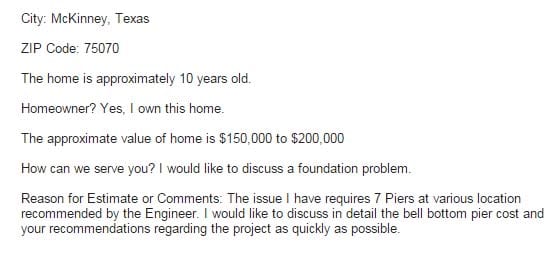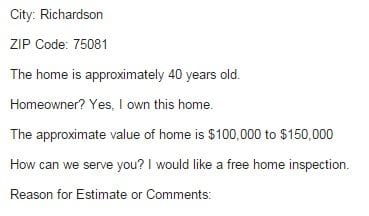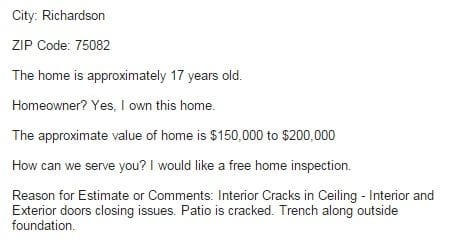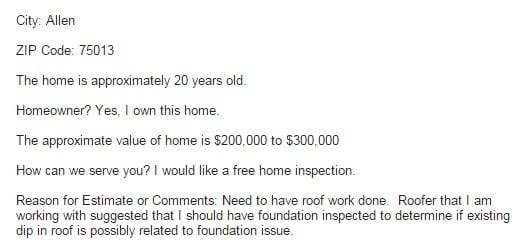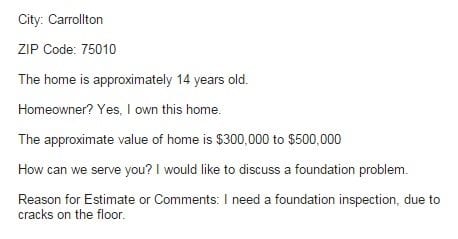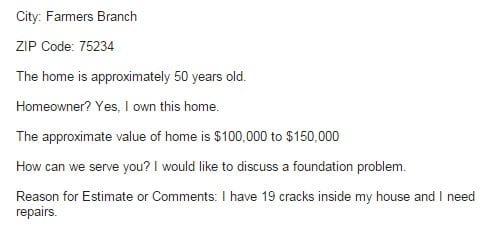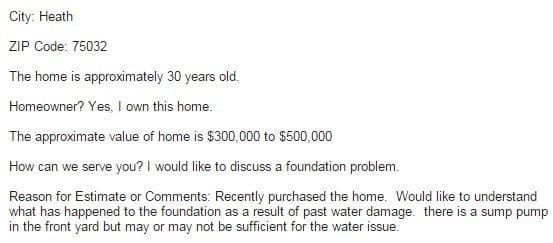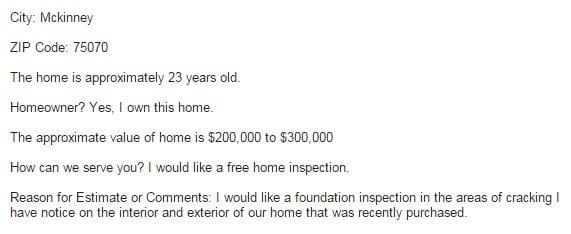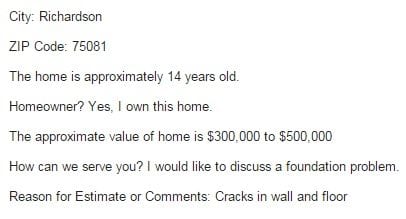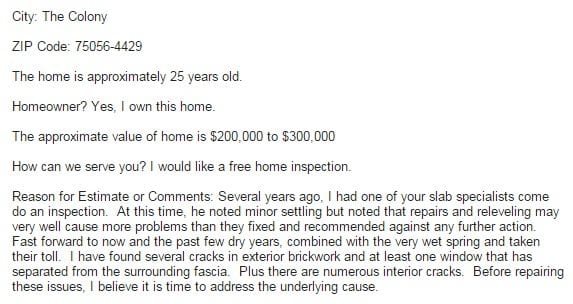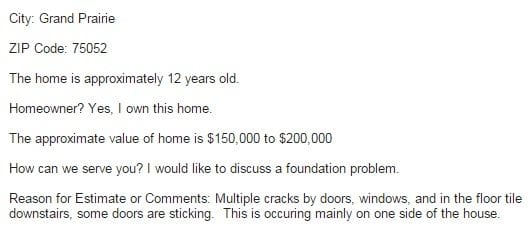Below are partial images of emails from Dallas area homeowners that illustrate the most Common Foundation Problems in the Dallas metro area. We have added our comments where we thought it might be beneficial. The point we wish to make is that many homeowners in your area are experiencing foundation issues.

This is the most common description of foundation movement and the resulting damage.
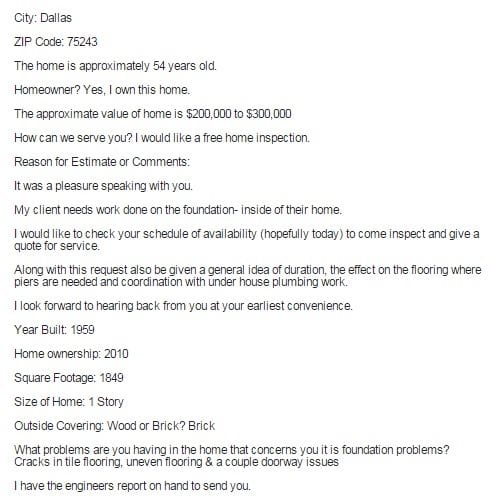
Yes, the engineer’s report would be helpful – if it is from an independent structural engineer. This is an older home so we would recommend plumbing inspections before AND after any foundation work. If any under slab plumbing work is required it should be done AFTER the foundation leveling process.
This homeowner has a serious problem. There are three primary “suspects” for this situation. First, the builder may have improperly compacted (or not compacted) the soil prior to the pouring of the concrete for the slab foundation. These types of problems usually surface in the first or second year after construction. Second, there may be an under slab plumbing leak that is causing further compaction of the soil. Third, this home may have had prior foundation repair work done and the foundation contractor failed / chose NOT to install interior piers where needed. Regardless of the cause, the sinking (settlement) in the interior of the house is a major problem that can seriously affect the structural integrity of the house and it must be addressed.
Wow – One month of ownership and the homeowner is seeing a “lean to the home” and other problems. We would ask about the inspector’s report that was done prior to the purchase. We would also ask if there was any foundation work done on the home prior to the purchase. By law, the seller must disclose material facts such as prior foundation problems and / or repairs.
If the seller did have foundation work done on the house prior to the sale then it was very LOW QUALITY and it has FAILED almost immediately. (We see this often.) If the seller failed to disclose foundation work on the house then the seller has significant legal liability.
This homeowner has a drainage problem and obviously a plan to fix it.
The most important clue is the fact that “half of the neighboring homes have had piers installed in the past 2 years.” That fact tells us we are dealing with some very unstable clay soils. Bell Bottom Piers will certainly give this homeowner the permanent support that the house needs.
This homeowner has wisely obtained an independent opinion from an Engineer (? Structural Engineer ?). A vast majority of structural engineers recommend Bell Bottom Piers. A guide to pricing can be found on our Foundation Repair Cost page.
The swelling of clay soils after heavy rains is called “upheaval” and often follows a dry period when the slab foundation has experienced “settlement.” The weather extremes are causing the “up and down” foundation movement.
Chimney issues should be addressed promptly. Once a chimney starts leaning away from the house it usually is only a matter of time before it falls to the ground.
After 40 years this house has gone through many climate related wet / dry cycles that can create tremendous stresses on the concrete foundation.
The homeowner’s comment about a trench is “interesting” and suggests an area of water retention close to the foundation – not a good situation.
Yes, the roofer is absolutely correct. Elevation readings should be taken throughout the house to determine if the interior slab is sagging or sinking. A dip in the roof is often an early warning sign of interior settlement of the slab foundation.
This is a common complaint from homeowners. Usually the clay soils under this portion of the house have lost a significant amount of moisture, causing the soil to shrink dramatically in volume. These problems can be caused by large trees or shrubs close to the foundation, extreme exposure to direct sunlight causing evaporation, compaction of the clay soils, or some combination of these causes.
Cracks on the floor is a warning sign of foundation movement so an inspection is recommended.
With 19 cracks the house quite likely has experienced significant foundation movement and perhaps has additional damage with separation of attic joints and rafters.
We can inspect and evaluate the foundation and the home and give this Heath homeowner our opinion. The important thing is that any past water or drainage problem has been corrected.
Unfortunately this McKinney homeowner is seeing new cracks in the home he recently purchased. Our first question would be, “Did this house have any foundation work done prior to the sale?” If so, then it is failing. If not, then the homeowner is simply another buyer of a home with a Minimally Functional Foundation.
We have seen a large number of homes in the Richardson area needing foundation support and leveling.
The underlying cause for the foundation problems of this house in The Colony is a combination of soil movement and a Minimally Functional Foundation. The corrective action is to install support piers under the foundation and re-level the house.
This Grand Prairie homeowner has stated that one side of the house is experiencing damage. This is a 2 story house so cracks at the foundation level can “rotate” upwards in a “V” shape, becoming wider as they expand toward the roof.





